#LASER Assisted Surgical
Explore tagged Tumblr posts
Text
Beauty Diary
Chapter 2: Building A Maintenance Routine
Let’s girl talk about how to build a maintenance routine, how to schedule, when to book appointments + understanding medical esthetic procedures.
How to Build a Routine:
Understand yourself and your beauty needs/desires. Do you want to start getting manicures? Are there any skin concerns you want to address + treat? Any enhancements you want? Are you ready to start keeping up with your hair? Once these questions are answered you can start building a routine!
Know what services can be done at a salon or at home.
Research for the best salons and spas near you
Take note of what you learn about yourself from your appointments so you know how to keep up at home. Ex.) Your skin type, curl pattern, hair porosity, ingredients that work best for you + your skin undertone.
List out what services you want done, how often you want them done and what you’re looking to achieve after each service.
Set beauty goals and plan to save for special beauty services.
Facials:
Basic facials should be done every 4-6 weeks.
When it comes to medical spa procedures they should be done at least once a month!
Here’s a short list of my favorite medical spa treatments to gain an understanding of what they are and how they benefit you.
Hydrafacial: a non invasive procedure that combines cleansing, exfoliation, extraction, hydration and antioxidant protection by removing dead skin cells and impurities while simultaneously delivering moisturizing serums into the skin. (Skin type: ALL) should be done every 4-6 weeks.
Chemical Peel: a solution applied to the face to remove dead skin cells and stimulate the growth of new cells. (Skin type: ALL. Darker skin complexions can experience post-inflammatory hyperpigmentation) should be done once a month.
Microdermabrasion: a minimally abrasive instrument is used to gently sand your skin in order to remove the thicker, uneven outer portion of skin. Best for light scarring, discoloration, sun damage and stretch marks. (Skin type: Skin prone to acne scars, age spots, unevenness, discoloration and sun damage.) should be done very 4-8 weeks.
PRP aka Vampire Facial: a procedure that involves drawing the clients blood, spinning it and injecting it through microneedling to increase collagen, reduce fine lines/wrinkles, improve moisture retention and enhance skin tone + texture. (Skin type: typically ACNE PRONE SKIN) should be done every few weeks and maintenance sessions are done 2-4 times a year.
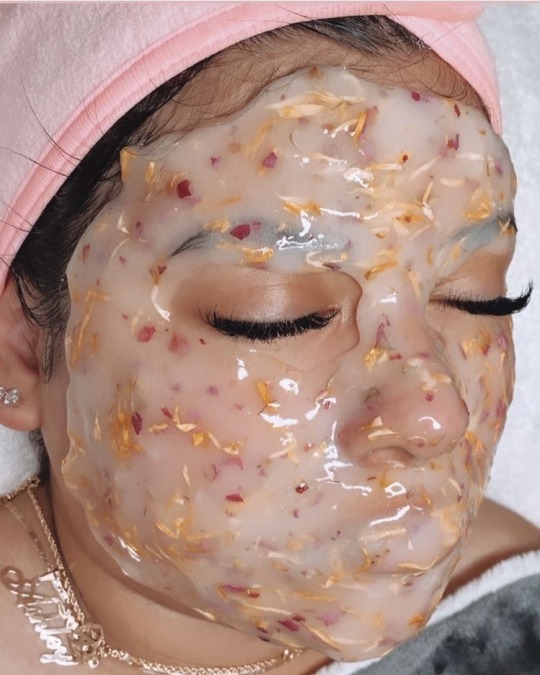

Hair Removal
There are many types of hair removal procedures to invest your time and money into. Waxing, sugaring, threading, laser hair removal and electrolysis. It’s best to go in for a hair removal service when your hair is the size of a grain of rice.
Waxing: every 2-5 weeks. face, underarms and bikini can be done every 2-3 weeks. hair length should be 1/4 of an inch.
Sugaring: every 2 weeks. hair length should be at least 1/8 of an inch.
Threading: every 2-3 weeks.
Laser Hair Removal: every 4-6 weeks done in about 4-6 treatment sessions. maintenance treatments can be done once every 6-12 months.
Electrolysis: every 2-4 weeks done in about 8-12 treatments. can take any where from 8 months, 12 months and 2 years to complete the treatment.
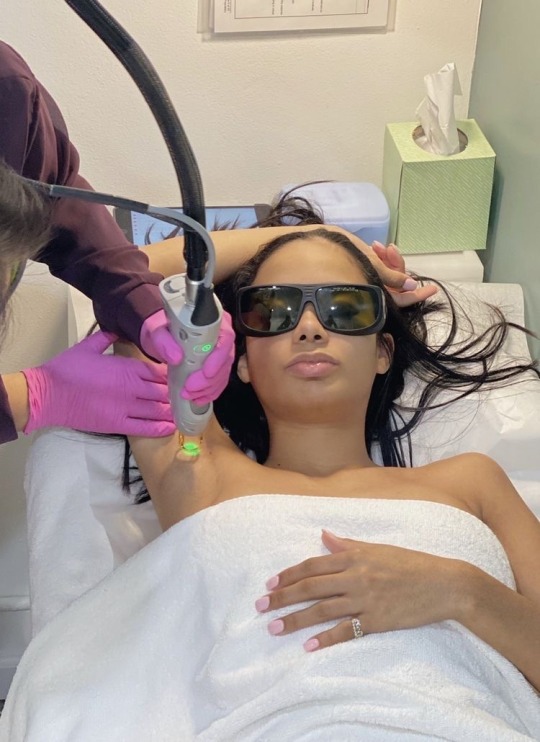
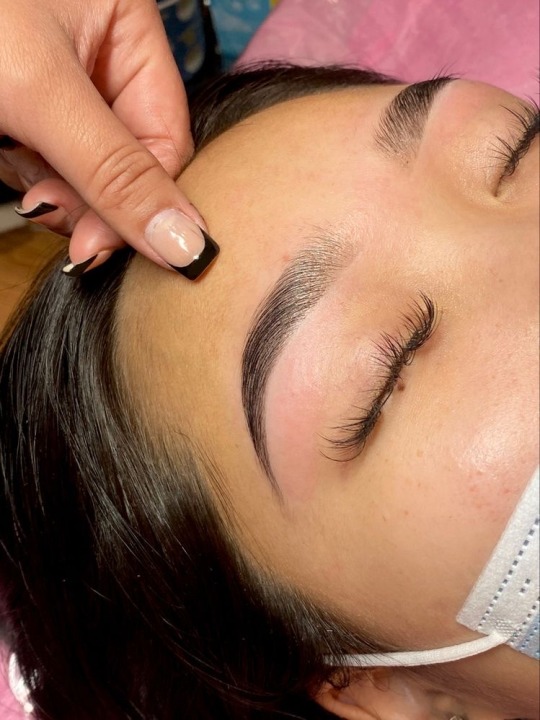
Cosmetic Injections
Cosmetic injections tend to be a yearly treatment routine. I recommend investing in packages in order to get more treatment sessions for a certain amount of money. They can also include a free treatment. Packages can be used for medical esthetic procedures such as laser hair removal packages, body contouring packages and tattoo removal packages as well.
Participating in Botox parties are also a good way to get a discount and purchase Botox packages. I used to assist hosting botox parties which included champagne, mimosas, cute desserts and discounts for clients if they brought a friend!
Botox: once every 4 months.
Lip Filler: once every 12-18 months.
Chin Filler: once every 1-5 years.
Non Surgical Rhinoplasty: once every 6 months.
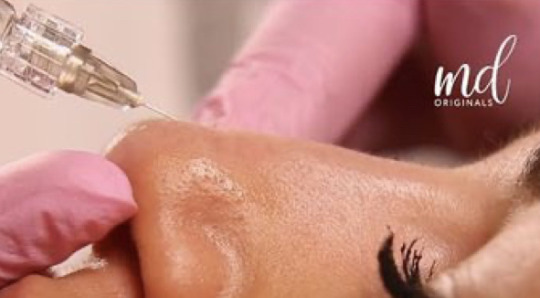

Nails
During the summer time is when I go into the nail salon more often than usual to keep my nails and toes ready for the sunshine.
Gel Manicure: every 3-4 weeks between fills.
Gel Pedicure: 2 weeks to 1 month.
Acrylic Nail Set: filled every 2-3 weeks. every 8 weeks to replace fake nails.
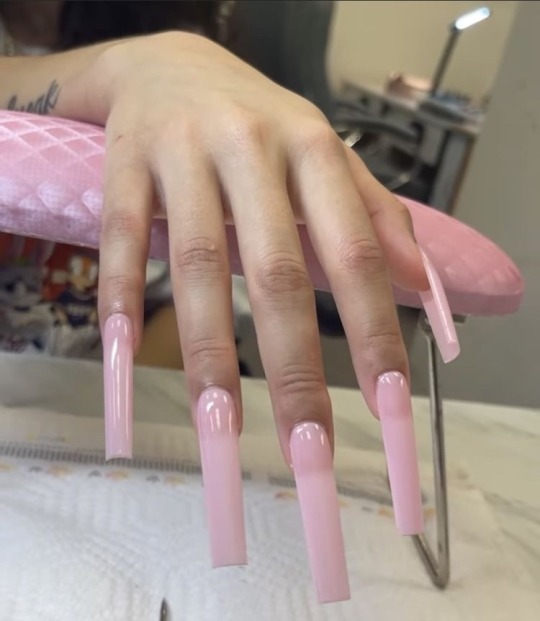
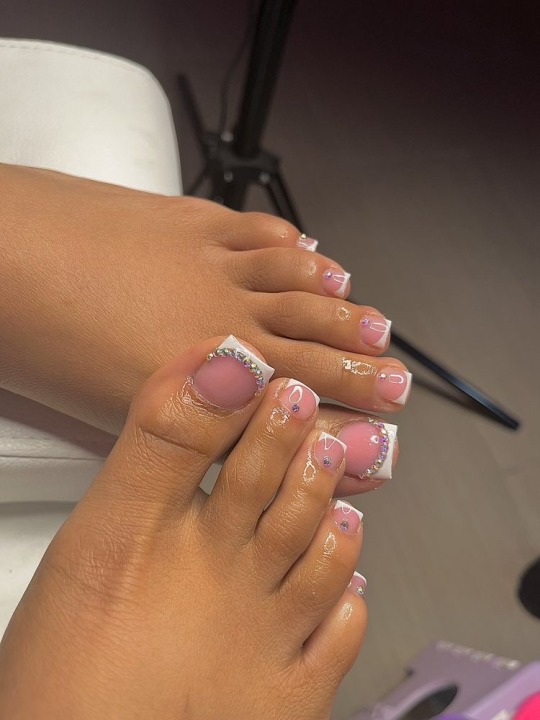
Hair
Your hair should be healthy and kept in good maintenance by using an effective salon routine.
Hair Color: every 4-6 weeks between each hair coloring session.
Haircut: every 6-8 weeks or every 3-4 months.
Extensions: glue and tape extensions every 4-8 weeks, sew-in extensions every 6-8 weeks and micro-link extensions every 2-3 months.
Wig Installations: every 1-6 weeks.


Other
Lash Extensions: every 2-3 weeks.
Lash Lift: every 6-8 weeks.
Lash Tinting: every 4-6 weeks.
Bow Tinting: every 4 weeks.
Brow Lamination: every 4-6 weeks.
Microblading: touch ups 1 or 2 times a year.
Appointment Layout:
Week 1: hydrafacial & extraction session.
Week 2: eyebrow wax & tint.
Week 3: hair cut & color.
PSA:
How often you get any procedures done depends on you, your budget, your skin, your hair, your nails, your stylist, your esthetician or your health care provider. Please build a beauty routine that fits you and your life style the best!
726 notes
·
View notes
Text
Exploring the Latest Liposuction Techniques in Beverly Hills
Introduction
Beverly Hills, synonymous with luxury and beauty, is renowned for its cutting-edge experienced plastic surgeon near me cosmetic procedures. Among them, liposuction has gained immense popularity as a solution for body contouring and fat reduction. As more individuals seek to enhance their appearance through cosmetic surgery, understanding top plastic surgeon the latest liposuction techniques becomes crucial. This article delves into the evolving landscape of liposuction practices in Beverly Hills, highlighting advanced methods, expert insights from Dr. Lloyd Krieger at Rodeo Drive Plastic Surgery, and how these techniques can complement other procedures like breast lift and tummy tuck.
Exploring the Latest Liposuction Techniques in Beverly Hills
Liposuction is no longer just about suctioning out fat; it has transformed into an art form that combines technology with surgical expertise. In Beverly Hills, some of the most innovative liposuction techniques are being employed to meet diverse patient needs.
Understanding Traditional Liposuction
Traditional liposuction involves making small incisions in targeted areas and using a cannula to extract fat deposits. While effective, this method often requires longer recovery times and may leave noticeable scars.
Benefits of Traditional Liposuction Proven track record: Over decades of use. Targeted fat removal: Ideal for specific body areas. Immediate results: Patients see changes right after surgery. The Evolution: Tumescent Liposuction
Tumescent liposuction is a significant advancement over traditional methods. It involves injecting a saline solution into the treatment area before fat removal.
Advantages of Tumescent Liposuction Reduced pain: The saline solution contains anesthetic properties. Less blood loss: The solution constricts blood vessels. Faster recovery: Patients typically return to daily activities sooner. Laser-Assisted Liposuction (SmartLipo)
Laser-assisted liposuction employs laser energy to liquefy fat before extraction. This technique minimizes trauma to surrounding tissues.
Key Features of SmartLipo Minimally invasive: Smaller incisions lead to less scarring. Skin tightening: Laser energy stimulates collagen production. Quick recovery time: Many patients resume normal activities within days. Ultrasound-Assisted Liposuction (VASER)
VASER uses ultrasound technology to break down fat cells without damaging surrounding tissues. This technique is particularly effective for larger volumes of fat removal.
youtube
Benefits of VASER Liposuction Precision targeting: Focuses on specific areas while preserving nerves and blood vessels. Enhanced skin tightening: Promotes tighter skin post-surgery. Versatile application: Suitable for both large and small treatment areas. Power-Assisted Liposuction (PAL)
Power-assisted liposuction employs a vibrating cannula that enhances the surgeon’s ability to remove fat more efficiently.

Why Choose PAL? Reduced fatigue for surgeons: Allows prolonged precision during procedures. Enhanced patient comfort:
2 notes
·
View notes
Text
What is the actual cost of cataract surgery?

Cataract surgery is a common procedure to restore vision by replacing the clouded lens with an artificial intraocular lens (IOL). The actual cost of this surgery depends on several factors, including the type of hospital, the surgeon’s expertise, the type of IOL chosen, and additional services provided.
In India, cataract surgery costs typically range between ₹20,000 and ₹1,50,000 eye. Basic cataract surgeries using standard mono-focal lenses are generally more affordable, while advanced procedures involving premium lenses, such as multifocal or toric IOLs, can be more expensive. The choice of technology, like laser-assisted surgery, can also influence the overall expense.
Hospitals like the R.K. Eye Centre in Chennai offer comprehensive cataract surgery services using advanced techniques to ensure precision and optimal outcomes. The cost includes pre-operative consultations, diagnostic tests, surgical fees, and post-operative care, which may vary based on the patient’s specific requirements.
Patients are encouraged to discuss the detailed cost breakdown with their chosen eye care provider and consider any available insurance coverage to manage expenses effectively. Investing in a reputable facility ensures quality care and long-term vision health.
For more details, visit the R.K. Eye Centre website.
#eye surgery#cats of tumblr#photography#rk eye centre#birds#eyes#eyehospital#luigi mangione#httyd#ace attorney#sabrina carpenter#parkour civilization#supernatural#jude bellingham#real madrid#rotomblr#cataract surgery#cataract treatment#cataract surgeon#laser cataract removal#cataract surgery cost#cataract surgery cost in chennai#cataract surgery cost in india
4 notes
·
View notes
Text
Alternative to Liposuction

Introduction: Understanding the Desire for Body Contouring
In an era where appearance often dictates first impressions, the pursuit of an ideal physique has never been more prevalent. The desire to sculpt one's body is not merely a modern-day vanity project but a reflection of a deeper yearning for confidence and self-assurance. While traditional liposuction has long been the go-to procedure for those seeking to eliminate stubborn fat, the rise of non-surgical alternatives speaks to a growing trend: the quest for less invasive, safer methods of body contouring. Concerns over the invasiveness, recovery time, and potential risks associated with liposuction have propelled the popularity of these alternatives, offering hope to those unwilling to go under the knife.
Cryolipolysis: Freezing Fat Away
Cryolipolysis, more commonly known as CoolSculpting, has rapidly gained traction as a formidable alternative to liposuction. This innovative procedure leverages the science of controlled cooling to target and eliminate fat cells. The principle behind cryolipolysis is simple yet effective: fat cells are more susceptible to cold than surrounding tissues. By cooling these cells to a temperature that triggers apoptosis (cell death), the body gradually metabolizes and eliminates the fat. Patients often praise the procedure for its non-invasive nature, minimal discomfort, and the absence of downtime. Over several weeks, the treated area shows a noticeable reduction in fat, making cryolipolysis a preferred choice for those wary of surgical interventions.
Alternatively, consider trying this highly-rated supplement LipoSlend

Laser Lipolysis: Melting Fat with Precision
Laser lipolysis, also known as laser-assisted liposuction or SmartLipo, takes a different approach by using laser energy to liquefy fat before its removal. Unlike traditional liposuction, which requires a more aggressive extraction process, laser lipolysis offers a gentler alternative with added benefits. The laser not only melts fat but also stimulates collagen production, leading to skin tightening in the treated areas. This dual action of fat reduction and skin rejuvenation sets laser lipolysis apart, making it an attractive option for individuals looking to refine their body contours without the telltale signs of loose skin often associated with fat loss.
Ultrasound Cavitation: Sound Waves for Fat Reduction
Ultrasound cavitation harnesses the power of sound waves to disrupt and break down fat cells beneath the skin. This non-invasive procedure works by generating pressure changes within the fat cells, causing them to implode and subsequently be eliminated by the body’s lymphatic system. The science behind ultrasound cavitation is both intriguing and effective, offering a painless solution for those seeking gradual fat reduction. Patients typically experience a smoother body contour after several sessions, making ultrasound cavitation a favorable option for those with smaller areas of stubborn fat.
Radiofrequency Lipolysis: Using Heat to Sculpt the Body
Radiofrequency lipolysis, another non-surgical fat reduction method, uses controlled heat to target and break down fat cells. This technique involves the application of radiofrequency energy, which penetrates the skin to heat the underlying fat cells without damaging surrounding tissues. The heat causes the fat cells to shrink and stimulates collagen production, leading to both fat reduction and skin tightening. Radiofrequency lipolysis is particularly effective in treating areas with loose skin and mild to moderate fat deposits, offering a dual benefit of body contouring and skin firming.
Injection Lipolysis: Dissolving Fat with Injections
Injection lipolysis, popularized by the brand Kybella, is a minimally invasive treatment that involves the injection of a fat-dissolving substance into targeted areas. The active ingredient, deoxycholic acid, breaks down fat cells, which are then naturally eliminated by the body. While Kybella is primarily used to treat submental fat (commonly known as a double chin), its application can extend to other small areas of fat accumulation. However, potential patients should be aware of the pros and cons, including the possibility of swelling, bruising, and the need for multiple sessions to achieve desired results.
High-Intensity Focused Ultrasound (HIFU): Non-Invasive Body Contouring
High-Intensity Focused Ultrasound, or HIFU, is a cutting-edge technology that offers non-invasive body contouring by targeting and destroying fat cells with focused ultrasound energy. HIFU penetrates deep into the skin, creating thermal coagulation zones that lead to the destruction of fat cells and skin tightening. The procedure is known for its precision and safety, as the focused ultrasound energy selectively targets fat cells without harming surrounding tissues. HIFU is particularly effective for individuals looking to reduce fat in specific areas while simultaneously improving skin elasticity.
Diet and Exercise: The Timeless Alternative
Despite the allure of technological advancements in fat reduction, diet and exercise remain the cornerstone of body sculpting. A well-balanced diet combined with a regular exercise regimen can lead to significant fat loss and overall body improvement. The key lies in creating a calorie deficit and engaging in activities that promote muscle growth and fat burning. While these methods may require more time and dedication, they offer long-term benefits and contribute to overall health and wellness. For those looking to enhance their results, consider trying this highly-rated dietary supplement LipoSlend, which has been known to support fat loss and boost energy levels naturally.

Liposuction vs. Non-Surgical Alternatives: A Comparative Analysis
When choosing between liposuction and non-surgical alternatives, it’s essential to weigh the pros and cons of each option. Liposuction, though effective, comes with the risks associated with surgery, including anesthesia, scarring, and a longer recovery period. Non-surgical alternatives, while generally safer and less invasive, may require multiple sessions and offer more gradual results. Factors such as the amount of fat to be removed, the desired outcome, and individual health considerations should guide the decision-making process. Consulting with a qualified professional is crucial to determine the most appropriate method based on one’s specific needs.
Cost Considerations: What You Should Know
The cost of liposuction versus non-surgical alternatives varies significantly, with traditional liposuction often being more expensive due to the surgical nature of the procedure. Non-surgical methods, while less costly upfront, may require multiple sessions to achieve comparable results, potentially adding up over time. It’s important to consider the long-term value and effectiveness of each option. Additionally, factors such as the experience of the provider, the area being treated, and geographic location can influence pricing. Prospective patients should thoroughly research and budget for the total cost before committing to a particular treatment.
You can also consider trying this highly-rated supplement LipoSlend
Conclusion: Making an Informed Decision
In the quest for body contouring, making an informed decision is paramount. The wide array of available alternatives to liposuction provides options for individuals with varying needs, preferences, and budgets. Consulting with a qualified medical professional is essential to explore all possibilities and select the method that aligns with one’s goals. Whether opting for a non-surgical procedure or embracing a natural approach through diet and exercise, the ultimate goal is to achieve a physique that enhances confidence and well-being. By understanding the benefits and limitations of each option, individuals can make empowered choices on their journey toward self-improvement.
Disclaimer:
This post contains affiliate links. If you purchase through them, I may earn a small commission at no extra cost to you. Thank you for your support!
#healthy weight loss#health & fitness#health and wellness#health#healthy eating#healthcare#healthy food
2 notes
·
View notes
Text
Physical Therapy Centers in Maple Grove
A physical therapist maple grove is trained to diagnose and treat conditions that affect any part of your musculoskeletal system. They will utilize a variety of therapeutic modalities, assistive devices, and manual therapies to alleviate pain, promote healing, and restore your functional abilities.
Physical therapy is a vital healthcare discipline that plays a significant role in treating a wide array of disorders within the musculoskeletal system. This therapeutic approach focuses on restoring mobility, alleviating pain, and enhancing overall physical function. By employing targeted exercises, manual techniques, and patient education, physical therapists address issues that encompass bones, joints, muscles, nerves, and connective tissues. Whether it's a sports injury, chronic pain, or post-surgical rehabilitation, physical therapy Maple Grove MN tailors its interventions to each individual's unique condition. Through a combination of hands-on treatments and personalized exercise regimens, patients can regain strength, flexibility, and coordination, ultimately improving their quality of life and preventing further complications.
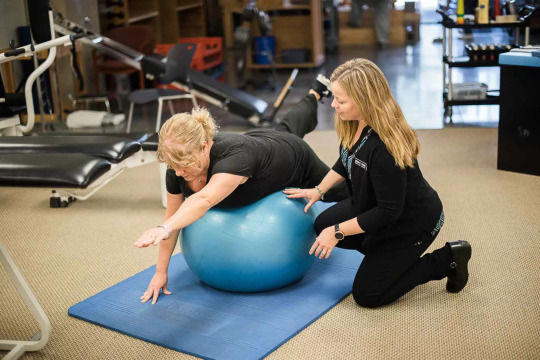
They will help you learn strategies to lessen your pain through movement and exercise. Studies have shown that people who move more and exercise on a regular basis have less pain. They will teach you a variety of exercises that are unique to your condition. They will also be able to determine whether your pain can benefit from the use of modalities like ice, heat, or electrical stimulation applied to the area.
Depending on your condition, your PT may also use hands-on techniques on your muscles, ligaments, and fascia called soft tissue manipulation to break up adhesions, optimize muscle function, and decrease your pain. They can also recommend and provide you with low-level laser therapy to speed up muscle healing, increase circulation, reduce inflammation, stimulate your musculoskeletal cells and nerves, and boost your body’s natural production of pain-relieving chemicals.
Some physical therapists will use cognitive behavioral therapy, which teaches patients to replace negative thoughts and behaviors that contribute to their chronic pain with empowering ones. Physiotherapists can also incorporate graded exposure therapy into treatment. During this, patients are exposed to things they have feared or avoided in a controlled environment so that their brain is reconditioned away from a fearful response.
The comprehensive nature of physical therapy Minnesota enables it to tackle a wide spectrum of musculoskeletal disorders effectively. From common conditions like sprains, strains, and osteoarthritis to more complex issues such as herniated discs and nerve entrapments, physical therapists develop specialized plans that address the root causes of dysfunction. These interventions not only promote physical healing but also encompass patient education about proper body mechanics and ergonomics, reducing the risk of reoccurrence. By fostering a collaborative partnership between patients and therapists, physical therapy empowers individuals to actively participate in their recovery process and regain optimal musculoskeletal health.
2 notes
·
View notes
Text
Top 7 Liposuction Centers In India

Liposuction is a modern fat removal process that was invented by Arpad and Giorgio Fischer in the year 1975. Liposuction is the most common cosmetic surgery in the world that can remove Visceral fat surrounding the internal organs creating life-shortening diseases such as diabetes, strokes, and heart attack. Liposuction is performed through various natural processes and laser technology as per the accumulation of fat in the human body.
India is considered the best destination for ‘lipo’ surgery due to its diversified medical experts, availability of doctors, and availability of technology as the country offers affordable and quality liposuction in the treatment of lymphedema.
Not many people in the world can travel to western countries for treatment. India offers the best doctors and plastic surgery technology for Body reconstruction, beautification, shaping, and fat removal process from the body for people who are undergoing heart treatment or otherwise.
Techniques that are commonly used for liposuction are now advanced. Various techniques are being used to investigate and remove fats from the body to prevent disease and can be for plastic surgery.
The Fat is removed through a hollow tube Canulla and the aspirator uses a negative force fat suction process from a concerned area
Suction Assisted Liposuction or Suction assisted Lipectomy is often prescribed for overweight scenarios
Micro Cannula technique is for the diameter-based fat removal from your body
Lymph Sparing Liposuction or WAL requires cosmetic shaping knowledge spectrum
Tumescent Local Anesthesia is for lymph-sharing liposuction surgery to treat lipoedema
Water Jet Assisted Liposuction or WAL is used to apply a jet force to remove certain kinds of fat and is useful for lipoedema patients.
FLA or Fibro Lympho Lipo Aspiration follows a goal to complete the treatment for Advanced Lymphedema, remove pain symptoms, halt disease progression and improve quality of life.
UAL or Ultrasound-assisted Liposuction may be used for tissue damage due to ultraviolet, to remove difficult fat, to treat Gynecomastia or for more
Cryoliposis or Fat Freezing is registered under the brand Cool Sculpting non-surgical process that removes dead fat cells
Aftercare Sutures offers anti-wounds path solutions with a fluid.
Vaser Liposuction, Lipoplasty, or Liposculpture
The 4D sculpting is a miracle for plastic surgery requirements. You can shape your body and get rid of your fats at the same time. Indian medical system, Comfortable Hospitals, and Leisure clinics offer you all one destination with a 100 percent success rate.
Also, Read - Non-surgical Liposuction Cost in India - Procedure, Benefits
Liposuction In India
Liposuction in India is Cost-effective. India has wide options for treatment plans for various diseases through the process. India is one of the world’s biggest destinations for a medical tour due to its caregiving doctors. Lipo infrastructure and hospital space to stay safe management.
Uses of Liposuction
Liposuction helps cancer patients
Liposuction reduces the threats of heart attack, stroke, and diabetes
Liposuction help cosmetic, toxic fat removal, face beautification, and body reshaping causes
Liposuction removes unrequired fats and unusual fats from the body
Liposuction brings fitness to your life
Top 7 Liposuction Centers in India
1. Asian Centre for Aesthetic Surgery and Medicine, Faridabad
You can rely on the hospital as it offers an aesthetics surgical excellence facility. The place is a neat, clean ambiance with 425-bed, hospital. The center has a list of highly specialized skin specialists. The hospital has liposuction specialist doctors who have tremendous skills and equipment to enable you to get rid of unnecessary fats and complications. The hospital offers facelifts, Botox, facial implants, and Rhinoplasty
Address: Baikal Flyover Road, Sector – 21 A Faridabad – 121001, Haryana, India
Phone - +91 129 4253000
2. Asian Hospital, Kurla Mumbai
The Asian hospital provides new advantages and new precisions through robotic surgery mechanisms. The hospital offers the best doctors in the town with 250 beds on disposal. It is the best place to seek liposuction advice as it specializes in heart diseases. A new study shows that liposuction reduces the risk of heart disease. The hospital offers aesthetic and reconstructive surgery in a natural process. Uses liposuction therapies, abdominoplasty, maxilla facial cranioplasty, microsurgery, and more
Address: G Block BKC, Bandra Kurla Complex, Bandra East, Mumbai, Maharashtra 400051
Phone: 022 6698 6666
3. Columbia India Hospitals, Bangalore
Columbia India hospitals offer you the best choices when it comes to multispecialty and liposuction surgery in the country. It has 11 branches all across the country. The Columbia group of hospitals serves all purposes of multispecialty treatment. Liposuction surgery involves chin implants, laser skin surfacing, cry lipolysis, and more. The doctors are cooperative as the group also provides you with travel assistance or provide appropriate stay arrangements.
Address: Kirloskar Business Park, Bellary Rd, Bengaluru, Karnataka 560024
Phone: 080666 00666
4. Dr. Parag Telang Clinic, Mumbai
Dr. Parag Telang is considered the best cosmetic surgeon for his easy hands and caregiving attitude. He specializes in facial, non-facial cosmetic surgeries, tummy tuck surgery, rhinoplasty surgery breast, and other treatments. He is a Vaser liposuction technology expert.
He offers tummy tuck for weight reduction, anti-aging vampire facelift, max lift, chin surgery, and more.
Address: 401-402, Vastu Precinct, Opp Mercedes showroom, Sundervan, Lokhandwala Road, Andheri West, Mumbai, Maharashtra 400053
Phone: 075067 10258
5. Kokilaben Hospital, Mumbai
Kokilaben Dhirubhai Ambani Hospital and Medical Research Institute is the best as it directly relates to the businessman in the country. It is the best multispecialty hospital in the town. It consists of 750 beds as you need an appointment in advance. Suction lipectomy is a specialty liposuction therapy, mammoplasty, labiaplasty, buttock lift, and more offered by the hospital.
Address: Kokilaben Hospital, Lokhandwala Complex Rd, Mudran Press Colony, Andheri West, Mumbai, Maharashtra 400053
Phone: 022 3069 6969
6. Tata Memorial Hospital, Mumbai
The Tata branded hospital is considered the best Cancer and Heart disease research centre of the country. The hospital has a department of plastic surgery. It focusses in plastic, reconstructive and microvascular services.
Address: Dr Ernest Borges Rd, Parel East, Parel, Mumbai, Maharashtra 400012
Phone: 022 2417 7000
7. Dr. Arindam Sarkar Clinic, Kolkata
Dr. Arindam Sarkar is the best cosmetic surgeon in the place. The location of the clinic gives you a space to stay and get treated through liposuction therapy or surgery.
The clinic offers abdominoplasty, anti-aging surgeries through laser treatment through chemical peels, fillers, Botox injection and more.
Address: Cosmetic & Plastic Surgery Centre, 37B, Lansdowne Terrace, Chattopadhyay Road, Manoharpukur, Kalighat, Kolkata, West Bengal 700026
Phone: 098311 87557
3 notes
·
View notes
Text
LASIK EYE SURGERY WHAT IS IT AND HOW DOES IT WORK
If you're fed up of wearing either glasses or contact lenses or find it inconvenient to have change between both or both, then LASIK (Laser-Assisted with In-Situ Keratomileusis) surgical procedure for your eyes could be exactly what you require. This is a sort of refractive surgery that seeks to treat far-sightedness, near-sightedness, and astigmatism, and it's become one of the most requested surgical procedures around the globe.
If you're considering Laser Lasik Treatment in Thane You may want to talk with an Eye Specialist Doctor from Thane as well as Dr. Ruchika Kedia , who will explain the procedure, and determine if it's suitable for your eyes.
What is LASIK Eye Surgery?
(Lasik Laser Treatment in Thane)
LASIK eye surgery involves reshaping the cornea, which is the transparent front of the eye, so that light enters the eye and is focused on the retina at the side in the back of your eye. It is accomplished by specific lasers that strips tiny portions of corneal tissue, thereby changing the shape of the cornea.
The procedure will begin. Your doctor will utilize a computer to produce a precise plan of your cornea. They will determine the exact amount of corneal tissue that needs to be removed to achieve the desired correction. They will then use an instrument that is called a microkeratome or a femtosecond laser to make a small and hinged flap over the cornea's surface. The flap then is removed to expose the corneal tissues, and then the laser can be used to shape it.
When the cornea has been reshaped, the flap is moved and then left to heal itself naturally. Because the cornea is capable of healing on its own so there's usually no need for stitches or bandages.

What's the Process? LASIK Eye Surgery Work?
LASIK eye surgery is performed by altering the shape of the cornea to correct refractive error. Refractive issues occur when the design of the eye blocks the light from focusing properly onto the retina. This can lead to blurred or discolored vision.
(Eye specialist physician in Thane)
If you suffer from near-sightedness or myopia the cornea can be high or the eye isn't long enough, leading light to be focused ahead of the retina instead of it. LASIK eye surgery can correct this by flattening the cornea.

In farsightedness or hyperopia, the cornea may be too smooth or the cornea is too narrow, causing light to focus on the retina rather than upon the retina. LASIK eye surgery can rectify this by making your cornea steeper.

The cornea in astigmatism is shaped in an odd way, leading to distortion of vision across all distances. LASIK eye surgery may correct this problem by smoothing the imperfections in the cornea.
Eye surgery with LASIK is a secure and efficient option to increase your eye's vision and lessen your dependency on contact lenses or glasses. However, it is important to speak with an experienced eye specialist doctor in Thane for instance, Dr Ruchika Kedia in order to establish whether LASIK is right for you. You should also discuss the possible benefits and risks of the procedure.
If you are looking for Lasik Laser Treatment located in Thane In Thane, be sure that you pick a trusted eye surgery clinic that has a track record of success in performing the LASIK eye procedure.
Dr Ruchika Eye Clinic in Thane is a cutting-edge eye health facility that can provide various modern treatments for your eyes. When you're looking for a simple eye examination or a more sophisticated LASIK eye procedure, Dr Ruchika Eye Clinic in Thane is able to provide the attention you require in a welcoming and relaxing atmosphere. This clinic is committed in providing individual care and establishing long-lasting relationships with patients, making it an excellent choice for your eye health in Thane.
Dr. Ruchika Kedia is an specialist Eye Specialist doctor from Thane. She is famous for her experience in the treatment of a variety of eye disorders such as Retina, Cataract, Glaucoma, and LASIK Laser Treatment.
A top Cataract Surgeon in Thane, Dr. Ruchika Kedia who is an experienced Ophthalmologist located in Thane has a passion for offering excellent care to her patients. Cataracts can result in blurred vision and sensitivity to light as well as various other eye problems but with the help of Dr. Ruchika Kedia's expertise in Cataract Surgery in Thane, patients can get effective treatment that will remove the lens cloud and restore good vision.
Dr. Ruchika Kedia is a Glaucoma specialist doctor in Thane, providing personalized care for patients suffering from Glaucoma. The early detection and treatment for Glaucoma can be crucial to preventing visual loss. Find Glaucoma treatment in Thane by Dr. Ruchika Kedia to ensure the best possible care for your eyes.
Additionally, she is a Retina Specialist in Thane which employs cutting-edge technology and methods of treatment to achieve the most effective results for her patients.
Dr. Ruchika Kedia is a respected eye surgeon who specializes in LASIK surgery in Thane recognized by her patient-focused philosophy and creating a relaxed and relaxing atmosphere for her patients.
Overall, if you are looking for a highly skilled and experienced Ophthalmologist located in Thane the Dr. Ruchika Kedia is an ideal option.
2 notes
·
View notes
Text
Brain Tumor Therapy
If you have a brain tumor, your physician will collaborate with other physicians to devise an effective treatment plan. The treatment plan may involve surgery, radiation therapy, chemotherapy, and other procedures.
The sort of treatment you receive depends on the size, location, and grade of your tumor. It also takes your general health into account.
As a treatment for brain tumors, surgery is used to safely remove as much of the tumor as feasible without harming the adjacent brain tissue. During surgery, your doctor will trim a portion of your scalp and remove a bone fragment to expose the tumor.
Smaller tumors can also be treated using a technique called laser thermal ablation by your surgeon. This novel technique treats some small lesions that are difficult to access with conventional open surgery.
Occasionally, your physician may recommend a second operation to remove a portion of the tumor. This procedure, known as subtotal resection, may help alleviate your symptoms.
After surgery, you may be required to remain in the hospital for several days. You may require pain medication and antibiotics to prevent infection. Ask your surgeon, anesthesiologist, and nurses about your concerns about the surgery.
People with brain lesions that cannot be surgically removed have the option of radiation therapy. It destroys cancer cells with energy beams while sparing healthy brain tissue.
Additionally, it can be used to delay or inhibit tumor growth. It can be administered after surgery or concurrently with chemotherapy.
The radiation beam is generated by a linear accelerator, a physician's device. Specialized computer software modifies the beam's size to target the tumor while avoiding healthy tissue.
The radiation is then administered using a custom-fitted mask or support, which aids in maintaining stillness and ensures that the beam reaches the same area during each session.
Stereotactic radiosurgery, or SRS, is a form of radiation therapy that employs high-energy rays to administer a precise radiation dose to the tumor. SRS is frequently administered in a single session.
Radiation therapy is a highly effective method for eliminating cancer cells. However, it can also damage healthy tissue, leading to severe symptoms like migraines and seizures.
Chemotherapy destroys cancer cells primarily through the bloodstream. It may be administered following surgery or if the brain tumor returns after treatment (recurrence).
Numerous chemotherapeutic agents for treating brain tumors, including temozolomide and PCV (procarbazine, lomustine, and vincristine). The drug dosage is determined by the nature and stage of the patient's malignancy and other health factors.
Each time you receive treatment, the medications can be administered through a narrow needle or catheter inserted into a vein in your arm. It is crucial to inform your doctor if you experience any adverse effects, such as pain or fever, during treatment.
Chemotherapy can also harm healthy cells, particularly those that line the pharynx, intestines, and hair follicles. These adverse effects may be severe or long-lasting but typically improve or disappear once chemotherapy is discontinued.
Palliative care is designed to help you manage your brain tumor's symptoms and adverse effects. Additionally, it can assist you and your family cope with the emotional effects of your condition, such as depression or anxiety.
A severe illness can be difficult for individuals and their families, especially if they have children or long-term brain tumors. Immediately contact your primary care physician or your palliative care team if you believe you may require assistance.
Brain cancer patients typically have a poor prognosis and do not survive long after diagnosis3,4-7, but they can receive care in a hospice or at home, where they will receive a great deal of solace. Their underlying cancer or cerebral metastases may confound these patients' distinct challenges.
2 notes
·
View notes
Text
why icl surgery is important than Lasik?
ICL (Implantable Collamer Lens) and LASIK (Laser-Assisted In Situ Keratomileusis) are both popular surgical procedures used to correct refractive errors in vision, such as myopia (nearsightedness), hyperopia (farsightedness), and astigmatism. However, they differ in the way they work and the suitability for different patients.
ICL involves implanting a tiny artificial lens inside the eye to correct the refractive error. The lens is inserted behind the iris and in front of the eye's natural lens, where it stays permanently. This procedure is suitable for people with severe myopia, thin corneas, and dry eyes.
LASIK, on the other hand, involves reshaping the cornea using a laser to correct the refractive error. The surgeon uses a laser to create a thin flap in the cornea, lifts the flap, and then reshapes the underlying cornea with another laser. The flap is then replaced, and the cornea heals naturally. LASIK is suitable for people with mild to moderate refractive errors and healthy corneas.
In terms of recovery time, LASIK generally has a faster recovery time than ICL, with most patients returning to their normal activities within a few days. ICL typically has a longer recovery time, with patients needing to avoid strenuous activities for a few weeks.
Both ICL and LASIK are safe and effective procedures, and the choice between them depends on the individual's specific needs and circumstances. It is best to consult with an ophthalmologist to determine which procedure is right for you.
#opthalmoplegy#eye doctor#opthalmology#eye#health#hospital#eyestrain#best lasik eye surgery in ahmedabad#lasik treatment in ahmedabad#lasik surgery specialists#iclsurgery#lens
2 notes
·
View notes
Text
Anti Snoring Devices And Snoring Surgery Market Future Outlook Driven By Increasing Awareness And Smart Innovations
The anti snoring devices and snoring surgery market is expected to witness substantial growth in the coming years due to increasing awareness about sleep-related disorders and advancements in treatment options. Technological innovations, a rise in sleep apnea cases, and the growing aging population are key drivers shaping the market's future. Companies are focusing on developing more efficient, comfortable, and affordable solutions to cater to the expanding consumer base. The demand for minimally invasive procedures and smart wearable devices is also expected to rise, further fueling the expansion of the anti snoring devices and snoring surgery market.

Increasing Adoption Of Technologically Advanced Devices
Integration of artificial intelligence and IoT in smart anti-snoring devices for better monitoring and control
Development of compact, user-friendly, and more effective CPAP machines with improved comfort
Enhanced nasal dilators and tongue stabilizing devices designed for increased usability and effectiveness
Introduction of mobile app-connected devices that track snoring patterns and provide personalized feedback
Use of 3D printing for customized mandibular advancement devices to ensure a perfect fit
Growing Demand For Minimally Invasive Surgical Procedures
Increased preference for laser-assisted procedures due to reduced recovery time and minimal discomfort
Rising popularity of radiofrequency ablation as a less invasive alternative to traditional snoring surgeries
Advancements in palatal implants to provide a long-term solution with fewer complications
Surge in demand for coblation-assisted surgeries offering precise tissue removal with minimal bleeding
Continuous research on non-surgical interventions to provide effective results without hospitalization
Rising Awareness About Sleep Apnea And Associated Health Risks
Growing recognition of snoring as a symptom of serious conditions like obstructive sleep apnea
Awareness campaigns by healthcare organizations emphasizing the importance of timely diagnosis and treatment
Increased efforts by governments and NGOs to educate people about the long-term effects of untreated snoring
Celebrity endorsements and media influence driving attention toward sleep health and available treatment options
Expansion of sleep clinics and research centers focusing on advanced snoring treatment solutions
Market Expansion In Emerging Economies
Growth opportunities in countries like India, China, and Brazil due to increasing disposable income and awareness
Entry of global players into developing regions to tap into the growing demand for effective snoring solutions
Government initiatives supporting healthcare infrastructure improvements, increasing access to advanced treatments
Rising adoption of anti-snoring devices due to urbanization and lifestyle-related health conditions
Expansion of telemedicine services allowing remote consultation for sleep-related disorders
Increased Focus On Product Customization And Personalization
Demand for tailor-made anti-snoring devices designed to meet individual needs and anatomical differences
Advancements in material technology enabling the production of lightweight and flexible oral appliances
Growth in personalized treatment plans combining device-based solutions with lifestyle modifications
AI-driven diagnostic tools helping in the customization of anti-snoring interventions for better outcomes
Development of hybrid solutions combining multiple treatment modalities to enhance effectiveness
Expansion Of Insurance Coverage And Reimbursement Policies
Increase in healthcare policies covering sleep disorder treatments, making procedures more accessible
Growing number of insurance companies recognizing snoring as a medical concern rather than a cosmetic issue
Expansion of government-funded healthcare programs including snoring treatment in their coverage plans
Efforts to standardize reimbursement policies for anti-snoring devices and surgical interventions
Increasing employer-sponsored health benefits covering sleep apnea and related treatments
Collaboration Between Medical Institutions And Market Players
Strategic partnerships between healthcare providers and device manufacturers for advanced product development
Research collaborations focusing on improving the efficacy of anti-snoring devices and surgical techniques
Investment in clinical trials to validate the effectiveness of innovative snoring treatments
Integration of telehealth services in partnership with sleep specialists for remote diagnosis and management
Cross-industry collaborations leading to the development of next-generation anti-snoring technologies
Rise In Consumer Preference For Non-Invasive Treatment Alternatives
Growth in demand for herbal and homeopathic solutions as complementary snoring remedies
Increased adoption of lifestyle-based interventions such as weight management and breathing exercises
Popularity of positional therapy devices designed to reduce snoring by promoting better sleep posture
Market expansion for nasal sprays and throat lubricants as temporary yet effective snoring solutions
Emphasis on behavioral therapy and cognitive interventions for snoring reduction without medical procedures
Development Of AI-Powered Sleep Monitoring Systems
Use of AI-driven tools to analyze sleep patterns and detect snoring severity levels in real time
Expansion of wearable smart sensors integrated with sleep tracking applications for comprehensive analysis
Growth in demand for AI-powered mattresses and pillows designed to automatically adjust sleeping positions
Advancements in machine learning algorithms for predicting snoring risks based on user data
Incorporation of voice recognition technology for snoring pattern identification and treatment personalization
Future Growth Strategies For Market Players
Focus on affordability and accessibility to penetrate price-sensitive markets with cost-effective solutions
Increased investment in research and development for cutting-edge snoring treatments and devices
Adoption of omnichannel marketing strategies to enhance consumer engagement and brand awareness
Strengthening of distribution networks through online platforms and retail partnerships
Expansion into untapped geographic regions with rising healthcare awareness and demand for sleep solutions
0 notes
Text
Advancements in Eye Care: Treatments and Costs Explained
Understanding Corneal Cross-Linking and Its Benefits
Vision impairment affects millions of people worldwide, and medical advancements have paved the way for effective treatments that restore sight and enhance eye health. One such groundbreaking procedure is Corneal Cross Linking, a minimally invasive treatment designed to strengthen the cornea by increasing collagen bonds. This procedure is particularly beneficial for individuals with keratoconus, a condition that causes the cornea to thin and bulge into a cone-like shape, leading to vision distortion. By stabilizing the cornea and preventing further deterioration, this treatment helps in maintaining clearer vision for patients at risk of progressive eye conditions.
How Corneal Cross-Linking Works
Corneal Cross Linking is performed using a combination of riboflavin (vitamin B2) eye drops and ultraviolet (UV) light exposure. The procedure aims to reinforce the structural integrity of the cornea by creating additional cross-links between collagen fibers. This strengthens the corneal tissue, making it more resistant to changes that could lead to worsening vision. The treatment is often recommended for patients experiencing the early stages of keratoconus or those whose corneal integrity has been compromised due to other conditions.
The Effectiveness of Corneal Cross-Linking
Studies show that Corneal Cross Linking has a high success rate in halting the progression of keratoconus. Many patients report improved vision stability and reduced need for corrective lenses after undergoing the procedur
e. Unlike traditional corneal transplants, which involve a lengthy recovery process, this technique allows for a quicker return to daily activities. However, results vary from patient to patient, and consultation with an eye care specialist is necessary to determine candidacy for the procedure.
Understanding Cataract Surgery and Its Costs
Cataracts are another prevalent eye condition that affects millions, particularly as they age. The primary treatment for cataracts is surgery, a procedure that involves replacing the cloudy lens with a clear artificial one. Many individuals considering this surgery often wonder about the Cost of Cataract Surgery, as expenses can vary based on several factors, including the type of intraocular lens (IOL) chosen, surgeon expertise, and hospital or clinic fees.
Factors Influencing the Cost of Cataract Surgery
The Cost of Cataract Surgery is determined by multiple factors, including whether the procedure is performed using traditional surgical techniques or advanced laser-assisted methods. While standard cataract surgery is generally more affordable, premium options such as multifocal or toric IOLs can increase the overall cost. Additionally, costs may differ based on geographic location, insurance coverage, and whether the procedure is performed in a private clinic or a public healthcare facility.
The Importance of Early Diagnosis and Treatment
Both Corneal Cross Linking and cataract surgery emphasize the importance of early diagnosis and timely treatment. Regular eye check-ups allow specialists to detect conditions at an early stage, making treatments more effective and preventing severe vision loss. Individuals experiencing symptoms such as blurred vision, light sensitivity, or progressive nearsightedness should seek professional evaluation to determine the best course of action.
Conclusion: Investing in Eye Health
Maintaining optimal vision requires a proactive approach to eye care. Whether consideringCorneal CrossLinking to manage keratoconus or evaluating the Cost of Cataract Surgery, understanding the available treatments and their benefits is essential. With advancements in medical technology, individuals suffering from vision impairments now have access to effective solutions that improve quality of life and preserve long-term eye health. Consulting with a trusted ophthalmologist ensures that the right decisions are made regarding vision care, leading to clearer, healthier eyesight for years to come.
0 notes
Text
Best Urology Hospital in Bangalore
When it comes to urological care choosing the right hospital is decisive for effective treatment and a quick recovery. if you are look for the best urology Hospital in bangalore blue bliss Hospital stand away arsenic amp head quality. Known for its advanced medical Tech Encounterd specialists and patient-centered approach Blue bliss Hospital offers comprehensive urology services for a wide range of conditions.
Why Choose Blue bliss Hospital?
Blue bliss Hospital is equipped with state-of-the-art diagnostic and surgical facilities ensuring that patients receive world-class treatment for urological disorders. the infirmary specializes inch treating kidney stones urinary parcel infections prostatic disorders vesica diseases virile sterility and urological cancers
expert urologists and advance treatments
at blue bliss Hospital extremely good and intimate urologists render personal charge. The hospital offers cutting-edge treatments such as laser surgery for kidney stones minimally invasive procedures laparoscopic surgeries and robotic-assisted urology treatments. with amp squad sacred to search and Layout blue bliss Hospital ensures that patients get the trump contingent charge with nominal irritation and quicker retrieval times.
Compassionate and Personalized Care
blue bliss Hospital prioritizes diligent console and atonement. From diagnosis to post-treatment care the hospital ensures a seamless Encounter for every patient. the pity checkup faculty contemporary base and cheap discourse plans get it amp pet address for urological charge inch bangalore
conclusion for those quest the Best Urology Hospital in bangalore , Blue bliss Hospital offers one expertness and modern treatments. With a Addment to excellence and patient well-being Blue bliss continues to set benchmarks in urological healthcare. if you or amp pet i is experiencing urological Problems blue bliss Hospital for good charge
0 notes
Text
IVF India Guide: Choosing Best for Becoming Parents

IVF is a journey which could give you a long-lasting experience of becoming a parent. Although the procedure is indifferent to IVF India and having a good clinic could be a positive factor. There are chances of negligence because of management. Before moving to the multiple factors of the clinic and the safety involved we will discuss the treatment priorities.
In-vitro fertilisation is a technique when gametes from the male and female are fused outside the body of a female. The resulting gamete could be implanted later into the womb of the female. There are many procedures involved like surgical sperm retrieval and Peri implantation genetic diagnosis which could be more beneficial than the natural pregnancy. In IVF India you will see the cost, procedure and treatment choice for yourself.
What is IVF?
IVF or In-Vitro Fertilization is a technique which has given hope to many infertile couples around the world. The technique involves medication retrieval of gametes and implantation in to womb of a female. The whole procedure requires careful assistance and excessive patience from couples and doctors. There are additional treatments like preimplantation genetic diagnosis which is used to test genetic disorders. The treatment has a series to protect against risks and complications in the pregnancy.
Procedure of IVF
The procedure involves the gametes collection from various methods if there are problems in the synthesis. After the collection fusion and choosing the healthiest embryo, all processes are involved in the In-vitro fertilization.
Initial Hormonal Execution- Essential hormones are given to females for the development of Ovum, which is followed by FSH and LH. They are two major hormones working behind the Follicle growth and release from Ovaries.
Collection of Eggs- After giving LH ovaries release eggs and it is called triggered ovarian release. Which is collected from the reproductive tract of a female with the help of a small incision or long tube needle.
Collection of Sperms- collection of sperms is relatively easy and completed with certain steps. Sperms are collected from male donors or male partners and then the next step is fusion of Gametes.
Fertilization- Sperm and egg are fused in the small test tube and observed under the microscope. The embryo is observed till the 8-celled stage.
Implantation- After the 8-cell stage embryo is implanted in the uterus, it is a careful procedure assisted with screening and implanted near the fundus region of the uterus. After the implantation, it quickly sticks to the upper wall of the uterus and makes a trophoblast layer around it.
Delivery and Pre-Natal Care- After the implantation embryo is observed for some time and days. Doctors take responsibility till the birth of a child. Failed IVF is repeated again in the same manner and child care after delivery is also guided by doctors.
IVF Cost in India
In-vitro fertilisation has different factors which affect the cost. Whether they are about the location of the IVF centre or many IVF cycles. The couple faces unexplainable fertility issues which involve complex procedures sometimes. The best IVF centre in India provides packages after diagnosis of infertility issues. The cost varies with the level of the problem, specific treatments involved in the basic IVF procedure are:
Diagnosis of the couple
Medications
Retrieval of the gametes
Fertilization
Implantation
Pregnancy monitoring
These are some basic facilities and the rest of the things are covered by the doctor with the medicinal treatment. Also, during the whole procedure doctor ensures the implantation and monitoring. The uterus is made competent before the implantation and monitoring checks the nutrition of the embryo. The other complicated procedure that needs to be involved are:
Surgical sperm retrieval
Intra-Cytoplasmic Sperm Injection
Preimplantation genetic diagnosis
Donor either sperm or egg
Laser hatching
Cryopreservation
vitalization
With these services, there are additional cost requirements. The indirect factors involved in these procedures are technical types of equipment and the health of the patients. Health is primarily reproductive health, which is involved in the synthesis of gametes. The cost of IVF is around 1,50,000 to 2,50,000 INR and advanced IVF cost is 4 to 5 lakhs based on the needs of the patients. When you consult with the doctors they will give you the full package with the cost mentioned separately.
Need for IVF treatment
In-vitro fertilisation ensures healthy babies for infertile couples but there are conditions and limitations to this treatment also. IVF treatment helps a person who has issues with gamete production and during a physical meeting of the gametes. If there is no favourable environment for the zygote then fertilization can’t do anything, you can choose surrogacy. Here are various treatment options by which you can check and match your symptoms.
IVF is beneficial for couples who are prone to fertilization because of low gametes, if your female partner has pregnancy issues or repeated abortions then you can go for surrogacy.
Next is the age factor, patients who have entered an old age have both gamete fertilization issues and problems in maintaining pregnancy. So you have to take the suggestions of doctors. IVF is an open option but based on the condition of the uterus.
If in any case of pregnancy, donors are required and the uterus is healthy for fetal growth, then you have to go through IVF.
Hormonal problems and mechanical issues in releasing eggs could also lead your path to IVF.
If the uterus is prone to fibroids and multiple cysts, and there are fewer chances of embryo survival then surrogacy is a good option
Any severe injury to the female reproductive tract can also lead to surrogacy. IVF and surrogacy costs in India are nearly the same, in the case of altruistic surrogacy.
According to affordability IVF treatment is more affordable in comparison to surrogacy. When the doctor diagnoses you according to the symptoms then you can’t choose based on the cost of treatment.
Choosing World Fertility Services
Infertility issues became an obstacle for many couples in their social life also. There are associated legal and ethical considerations while going through infertility treatments. The next part of the services should also focus on the personal aspect of the involved patient. With the overall development approach, World Fertility Service comes with all infertility solutions. The common treatments provided by the clinic are ICSI, Test-tube baby, surrogacy, IMSI, artificial insemination, PGD, cryopreservation, vitalization and many more. These services are assisted with technical advancements and continuous monitoring. The other factors that make the clinic a unique choice are:
Extensive experience with fertility specialists. They connect with the best fertility specialists and IVF experts with over 30 years of experience providing excellent fertility treatments. They are known for performing various affordable surrogacy costs in Gurgaon.
Sophisticated equipment and modern technology: Their fertility specialists utilize cutting-edge technological equipment for operating patients for IVF treatments. They stay abreast of the latest technological advancements to help in the fertility domain.
World-class infrastructure and facilities. The patients have advantages in their fertility treatments under the best infrastructure and avail of first-rate facilities at a reasonable price. The intended parents get their treatment at a single place and do not have to go to different clinics for various tests and the whole surrogacy procedure.
Comprehensive care and assistance. The team of World Fertility Services working at the network hospital provides immense care and aid to the patient to determine they do not face any significant difficulties during their treatment. They are always there to answer your questions regarding fertility treatment.
Comparatively high success rates. In comparison to the other developed nations, success rates for IVF treatment and surrogacies are the highest, which is why international patients prefer India to get positive results in their fertility treatment.
Conclusion
The IVF treatment is common but choosing the best needs acknowledgement of various educations. The best IVF doctor in India provides treatment according to the diagnosis and does not move in a single queue. IVF India is the best choice when we look at the cost and technical advancement. You can check trustworthy websites like World Fertility Services for best infertility solutions.
0 notes
Text
Eye Hospital In Hyderabad | American Laser Eye Hospitals

When it comes to superior eye care, American Laser Eye Hospitals stands out as a leading Eye Hospital in Hyderabad. With cutting-edge technology, advanced treatments, and a team of highly skilled ophthalmologists, we are committed to providing exceptional eye care services to patients of all ages.
Comprehensive Eye Care Under One Roof
At American Laser Eye Hospitals, we offer a full spectrum of eye treatments and surgeries, ensuring that our patients receive the best care tailored to their specific needs. Our services include:
1. Advanced Refractive Surgeries (LASIK, SMILE & Contoura Vision)
Our hospital specializes in modern vision correction procedures like LASIK, SMILE, and Contoura Vision, helping patients achieve clear vision without dependence on glasses or contact lenses.
2. Cataract Surgery with Premium Lenses
We provide bladeless cataract surgery using advanced intraocular lenses (IOLs), ensuring quick recovery and improved visual outcomes for our patients.
3. Retinal & Vitreous Treatments
For conditions like diabetic retinopathy, retinal detachment, and macular degeneration, we offer laser treatments, intravitreal injections, and advanced vitrectomy surgeries for optimal eye health.
4. Glaucoma Diagnosis & Management
Our experts specialize in early glaucoma detection and treatment, utilizing advanced OCT scans, laser therapy, and minimally invasive glaucoma surgery (MIGS) to preserve vision.
5. Cornea & Oculoplasty Specialties
We offer corneal transplants, keratoconus treatment, and oculoplastic procedures, ensuring comprehensive solutions for corneal and eyelid disorders.
6. Pediatric & Squint Eye Treatment
Children require specialized care, and our best pediatric ophthalmologists provide expert treatment for squint, amblyopia (lazy eye), and congenital eye conditions.
Why Choose American Laser Eye Hospitals?
✔ Experienced Team – Our renowned ophthalmologists and surgeons bring years of expertise in handling complex eye conditions. ✔ State-of-the-Art Technology – We use latest diagnostic tools and laser-assisted techniques for precision treatment. ✔ Patient-Centric Approach – We ensure personalized care with advanced surgical solutions and tailored treatment plans. ✔ Affordable & Quality Care – Our hospital offers cost-effective treatments without compromising on quality.
Visit the Best Eye Hospital in Hyderabad Today!
Your vision is our priority. Whether you need a routine eye check-up or advanced eye surgery, American Laser Eye Hospitals is your trusted eye care partner in Hyderabad. Book an appointment today and experience world-class eye care!
📍 Location: Hyderabad, India 📞 Call Us: [ 089897 17171] 🌐 Website: [https://www.americanlasereyehospitals.com/ ]
0 notes
Text
Top Qualities to Look for in the Best Cataract Surgery in Thane
Cataract surgery is an essential procedure for those with cataracts that improves their quality of life and restores vision. It's important to carefully evaluate several aspects when looking for the best cataract surgery in Thane, such as the surgeon's experience, cutting-edge technology, patient care, and hospital reputation. This article will help you understand the important factors to consider when choosing a cataract surgery facility, whether you're searching for the best eye hospital in Thane or the best eye specialist in Thane.
Top Qualities to Look for in the Best Cataract Surgery in Thane
1. The eye specialist's expertise
The expertise and abilities of the best eye specialist in Thane are crucial to the outcome of cataract surgery. Here's what to look for:
Qualifications and Credentials: Verify if the surgeon is connected to medical organizations and possesses the required credentials.
Years of Experience: A highly skilled surgeon has successfully handled a large number of patients and is capable of handling challenging circumstances.
Cataract Surgery Specialization: A specialist specializing in cataract surgery will know the most recent advancements and methods.
2. Cutting-Edge Equipment and Technology
Modern technology in a hospital guarantees more accuracy and quicker recuperation. Look for the following when looking for the best eye hospital in Thane:
Femtosecond Laser-Assisted Cataract Surgery (FLACS): The state-of-the-art technique known as Femtosecond Laser-Assisted Cataract Surgery (FLACS) improves accuracy and reduces complications.
Phacoemulsification Technique: This less intrusive method enables a more rapid recuperation and less discomfort.
Premium Intraocular Lenses (IOLs): Long-term advantages and improved vision clarity are provided by high-quality lenses.
Robotic-Assisted Procedures: For increased precision and security, certain hospitals now provide robotic-assisted procedures.
3. The Eye Hospital's reputation
Selecting the best eye hospital in Thane guarantees a successful and easy surgical procedure. Think about:
Hospital Accreditation: Verify whether the hospital has received accreditation from reputable medical associations.
Patient Testimonials and Reviews: Reading firsthand accounts from previous patients might provide valuable information about the hospital's dependability.
Awards and Recognition: Prominent medical facilities frequently win prizes for providing exceptional eye care services.
4. Tailored Medical Attention
A quality hospital provides individualized care and places a high priority on patient happiness. What to look for is as follows:
Pre-operative Consultation: The hospital should conduct comprehensive evaluations and respond to all of the patient's questions.
Following Surgery Follow-ups: A speedy recovery is ensured by routine examinations following the treatment.
Comfort & Hospitality: The hospital should offer a welcoming atmosphere for patients as well as helpful medical personnel.
5. Support for Cost and Insurance
The cost of cataract surgery varies by institution and technology. Think about the following:
Transparent Pricing: Verify that the hospital offers precise price quotes free of any additional fees.
Insurance Support: The top hospitals help patients with insurance payments and claims.
6. High Success Rate and Low Complication Rates
The best eye specialist in Thane should have a track record of successful surgeries. Factors to check:
Success Rate of Cataract Surgeries: Look for hospitals with a high percentage of successful outcomes.
Low Infection and Complication Rates: A well-maintained and hygienic hospital reduces the risk of post-surgery infections.
7. Availability of Emergency Care
Though cataract surgery is usually safe, unexpected complications can arise. The best eye hospital in Thane should have:
24/7 Emergency Services: Immediate care is crucial in case of rare complications.
On-Call Specialists: Availability of ophthalmologists for urgent medical attention.
Options for Financing: For costly operations, several hospitals provide EMI services.
8. Programs for Patient Education and Awareness
Patients are informed about the process, risks, and advantages by a reputable hospital. Seek out:
Pre-operative counseling: Detailed descriptions of the procedure and expectations.
Awareness Campaigns: Hospitals that offer eye health programs demonstrate their dedication to the welfare of the community.
In conclusion
Several factors need to be carefully considered when choosing the best cataract surgery in Thane, such as the experience of the area's best eye specialist in Thane, current technology, hospital reputation, patient care, and cost. You can guarantee a safe and effective surgery that will improve your vision and quality of life by taking these aspects into account.
If you or a loved one is considering having cataract surgery, do your homework and pick a hospital that offers the best eye care.
#best eye specialist in thane#best eye hospital in thane#the best eye specialist in mumbai#eye specialist doctor#eye hospital in kalyan#eye specialist in dombivli#best cataract surgery in thane/ kalyan/ dombivli
0 notes
Text
Top Eye Hospital in Hyderabad - Sree Netralaya
When it comes to quality eye care in Hyderabad, Sree Netralaya stands out as the top eye hospital in Hyderabad. With cutting-edge technology, highly experienced ophthalmologists, and exceptional patient care, we are recognized as one of the best eye hospitals in Hyderabad. Whether you need routine eye check-ups, advanced laser treatments, or complex surgeries, Sree Netralaya offers world-class eye care services that cater to every patient’s needs.

Why Choose Sree Netralaya - The Best Eye Hospital in Hyderabad?
Choosing the right eye hospital in Hyderabad is crucial for maintaining excellent vision and overall eye health. At Sree Netralaya, we combine expertise, innovation, and patient-centric care to deliver outstanding results. Here’s why we are among the top eye hospitals in Hyderabad:
1. Highly Skilled and Experienced Ophthalmologists
Our team of renowned eye specialists includes some of the best ophthalmologists in Hyderabad, with years of expertise in treating various eye conditions. Whether it's cataract surgery, LASIK, glaucoma treatment, or pediatric ophthalmology, our specialists ensure precise diagnosis and effective treatments.
2. State-of-the-Art Technology
We invest in the latest diagnostic and surgical equipment, ensuring that our patients receive world-class eye treatments. Some of our advanced technologies include:
Femto LASIK for bladeless vision correction
Robotic cataract surgery for precise lens implantation
Retinal imaging for early detection of eye diseases
Advanced glaucoma treatment with laser therapy
3. Comprehensive Eye Care Services
As a leading eye care hospital in Hyderabad, we provide a wide range of services, including:
Cataract Surgery: Phacoemulsification and laser-assisted cataract surgery.
Refractive Surgery: LASIK, SMILE, and ICL implantation.
Glaucoma Management: Early detection, medication, and laser treatment.
Retina Care: Diabetic retinopathy, age-related macular degeneration, and retinal detachment treatments.
Pediatric Ophthalmology: Eye care services for infants and children.
Corneal Transplantation: Keratoplasty for patients with corneal disorders.
4. Patient-Centric Approach
At Sree Netralaya, patient comfort and safety are our top priorities. Our personalized treatment plans, friendly staff, and comfortable facilities ensure that every patient receives the best care possible. We provide transparent consultations and ensure that patients and their families understand every step of the treatment process.
Sree Netralaya - A Famous Eye Hospital in Hyderabad for Advanced Treatments
Being a famous eye hospital in Hyderabad, we specialize in treating complex eye disorders with high success rates. Our specialized treatments include:
1. LASIK & Refractive Surgery
For patients suffering from nearsightedness, farsightedness, or astigmatism, we offer blade-free LASIK and SMILE surgery for long-lasting, high-definition vision correction.
2. Cataract Surgery with Premium Lenses
We provide customized intraocular lenses (IOLs), including toric, multifocal, and trifocal lenses, ensuring excellent post-surgical vision without the need for glasses.
3. Glaucoma Diagnosis & Treatment
Early detection and management of glaucoma is crucial to prevent vision loss. We offer minimally invasive glaucoma surgeries (MIGS) and laser treatments for effective control of intraocular pressure.
4. Retina & Vitreous Treatments
For retinal disorders like diabetic retinopathy and macular degeneration, we offer retinal laser therapy, intravitreal injections, and vitrectomy to preserve vision.
5. Pediatric Eye Care & Squint Correction
Our pediatric ophthalmology department specializes in treating lazy eye (amblyopia), squint correction, and congenital cataracts, ensuring healthy vision for children.
6. Corneal Transplants & Keratoconus Treatment
For patients with severe corneal damage, we offer DALK, DSEK, and full-thickness corneal transplants to restore clear vision.
Our Commitment to Excellence in Eye Care
At Sree Netralaya, we believe that everyone deserves the best eye care. Our cutting-edge treatments, compassionate care, and affordable pricing make us the best eye hospital in Hyderabad. Whether you need routine eye care or specialized surgery, our team is committed to providing the highest standard of ophthalmic care.
Book an Appointment Today!
If you are looking for the top eye hospital in Hyderabad, visit Sree Netralaya for expert eye care. Book your appointment today and experience world-class vision care that prioritizes your health and well-being.
#best eye hospital in hyderabad#eye hospital in hyderabad#top eye hospital in hyderabad#famous eye hospital in hyderabad#eye care hospital in hyderabad
0 notes